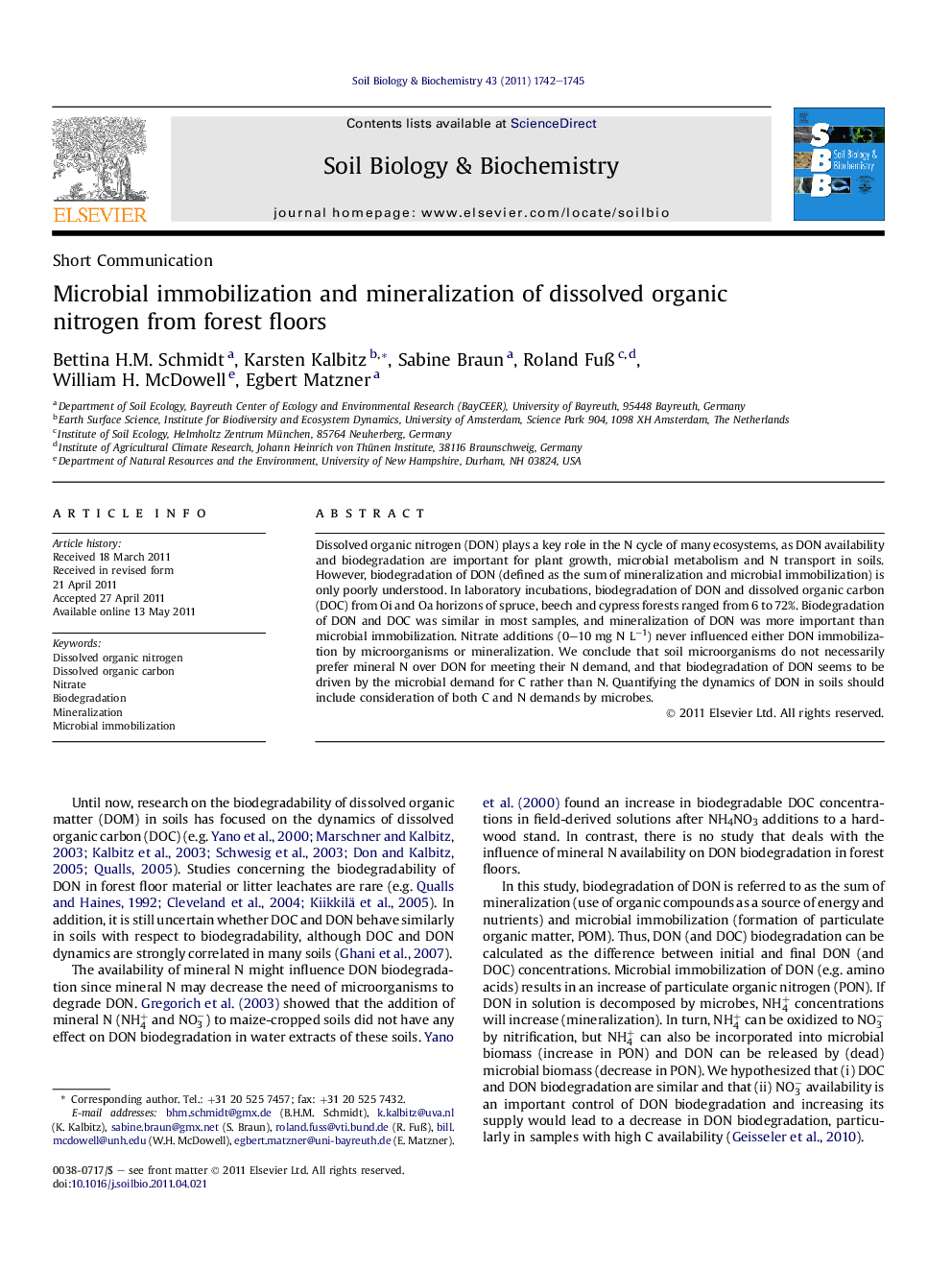| Article ID | Journal | Published Year | Pages | File Type |
|---|---|---|---|---|
| 2025114 | Soil Biology and Biochemistry | 2011 | 4 Pages |
Dissolved organic nitrogen (DON) plays a key role in the N cycle of many ecosystems, as DON availability and biodegradation are important for plant growth, microbial metabolism and N transport in soils. However, biodegradation of DON (defined as the sum of mineralization and microbial immobilization) is only poorly understood. In laboratory incubations, biodegradation of DON and dissolved organic carbon (DOC) from Oi and Oa horizons of spruce, beech and cypress forests ranged from 6 to 72%. Biodegradation of DON and DOC was similar in most samples, and mineralization of DON was more important than microbial immobilization. Nitrate additions (0–10 mg N L−1) never influenced either DON immobilization by microorganisms or mineralization. We conclude that soil microorganisms do not necessarily prefer mineral N over DON for meeting their N demand, and that biodegradation of DON seems to be driven by the microbial demand for C rather than N. Quantifying the dynamics of DON in soils should include consideration of both C and N demands by microbes.
► Biodegradation of dissolved organic nitrogen (DON) and carbon (DOC) was similar. ► Mineralization of DON was more important than microbial immobilization. ► Nitrate additions never influenced either DON immobilization or mineralization. ► DOC and DON they should be considered as a single pool of dissolved organic matter.
